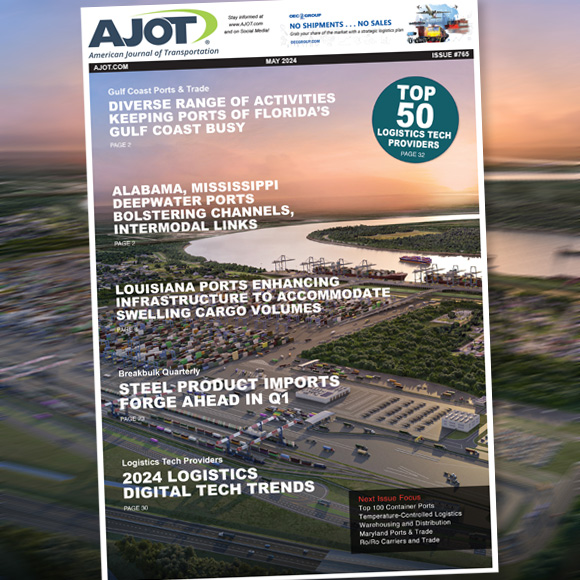Canadian Ports 2004 - Air Canada gets serious about Cargo; GSA
By Karen E. Thuermer, AJOT
The air passenger business has been flying through some storm clouds these days, and for Air Canada the turbulence has been especially rocky. But now that the company has successfully come out of bankruptcy and has restructured its business, the skies ahead appear to offer smoother flying.
Claude Morin, Air Canada vice president of cargo is especially optimistic about the carrier’s air cargo.
“Air cargo looks especially strong and is emerging to become more efficient,” he says.
Morin reports that one of the biggest changes to come out of Air Canada’s restructuring was the setting up of cargo as a wholly owned, separate subsidiary within the company, a change that became official on October 1st.
“This gives us accountability for financial results and the latitude to do our own thing,” Morin says.
Unlike before, Air Canada Cargo now has an arms’ length relationship with its mother company.
“We’re emerging from the Companies Creditors Arrangement Act (CCAA), focused and well on our way to becoming a profitable, growing and competitive company in a rapidly changing industry,” says Robert Milton, Chairman, President and CEO of ACE Aviation Holdings Inc. “We have not only reduced our cost structure and strengthened our balance sheet, we have fundamentally reinvented who we are. Air Canada can no longer be considered a traditional legacy carrier. At a time when our major competitors in the United States are struggling, we have radically transformed this airline into a highly connected global network carrier offering the simplicity and ease of our low cost competitors.”
As a result, Air Canada Cargo began offering new service such as a freighter to Frankfurt, Germany effective November 2. The route utilizes leased MD-11 aircraft and runs five times weekly from Toronto.
“The service represents a huge success story for us,” says Morin. “Up until the end of October, we flew 747 combi aircraft within main deck capacity. We were able to haul up to a maximum of 40 tons of freight in addition to passenger capacity. The biggest problem with this was we had only three such aircraft in our fleet. To reach a certain critical mass, you need more airplanes in your fleet, given costs associated with crews and maintenance.”
By employing an MD-11 aircraft and retiring the Boeing-747, Air Canada Cargo can now offer up to 80 tons of capacity via scheduled service, five times per week.
The service works well in also accessing the Spanish market via Vitoria International Airport (VIA) outside of Bilbao. Air Canada selected VIA as its only freighter hub in Spain because of the obvious advantages of close proximity and rapid access to markets, an excellent track record of fish and perishables handling, and its proven dedication to cargo business.
Fresh fish and lobsters are the major commodity flown to Spain on Air Canada. Fish is trucked to Toronto from Halifax to be loaded onto the MD-11 chartered from Gemini, which recently started flying every Wednesday to VIA. Although several pallets of vegetables can be loaded for the return leg, the aircraft proceeds to Frankfurt for the bulk of the outbound cargo.
Air Canada’s Spanish General Service Agent (GSA) Gen Air is currently studying the future potential for increasing shipments of Spanish produce for the Canadian and US markets.
Morin points out that Air Canada also has dozens of passenger flights a day operating between Canada and Europe.
“We are the dominate player on that route,” he says. “We have a strong presence in Frankfurt and London. We are also active in South America.”
Last year the carrier aggressively expanded its service to South America. Whereby it used to fly only to Sao Paulo, it now also services Bogotá, Lima, Santiago, Caracas, and Buenos Aries.
Business on trans Pacific routes also remains stable and has been for the last three years, with the exception of during the SARS epidemic in both China and Toronto.
The carrier has launched additional service between Toronto




